#aizu-wakamatsu
Text

Aizu Bukeyashiki, Aizu-Wakamatsu
21 notes
·
View notes
Photo
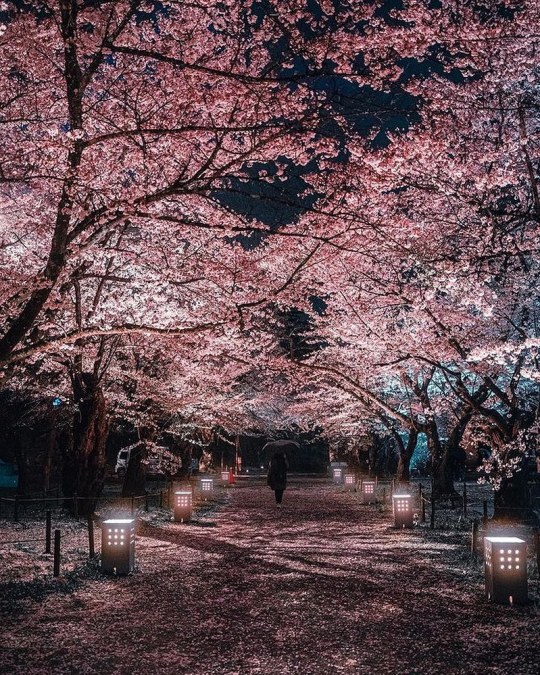
Aizu-Wakamatsu - Fukushima Prefecture
📷 @kingsgraph_
Via raw_tokyo_
#japan#japanese#nippon#travel#sightseeing#aizu-wakamatsu#fukushima#fukushima prefecture#spring#sakura
2 notes
·
View notes
Text
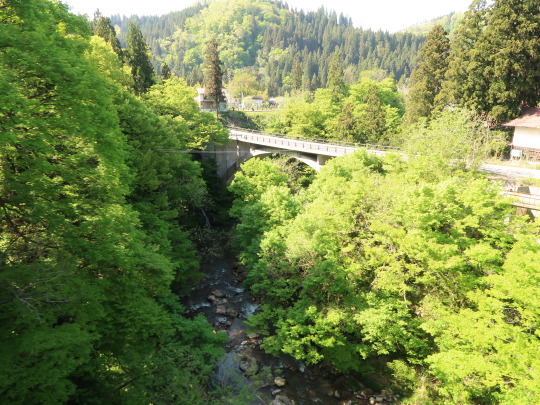


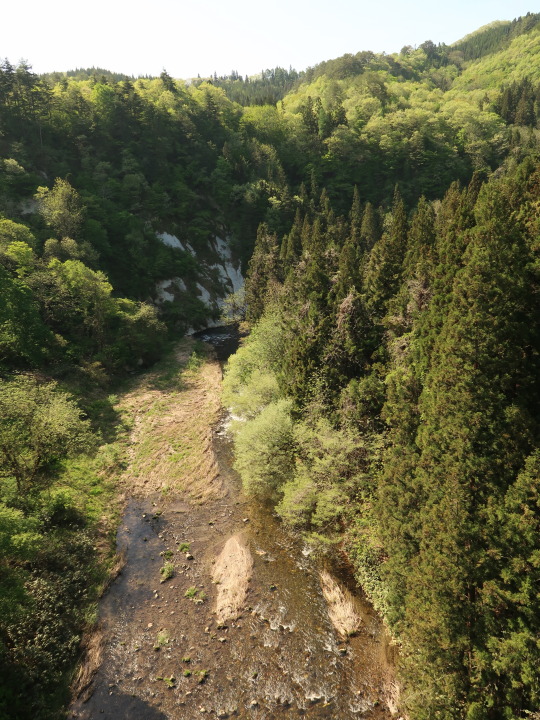
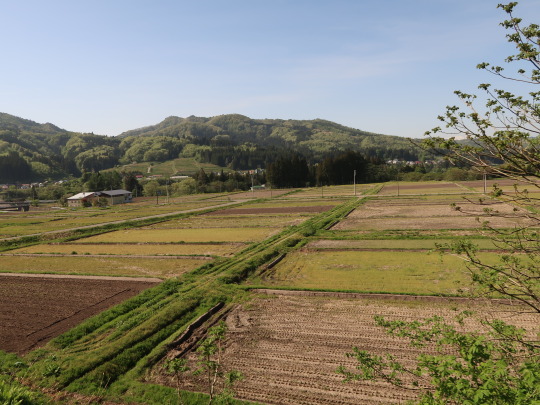

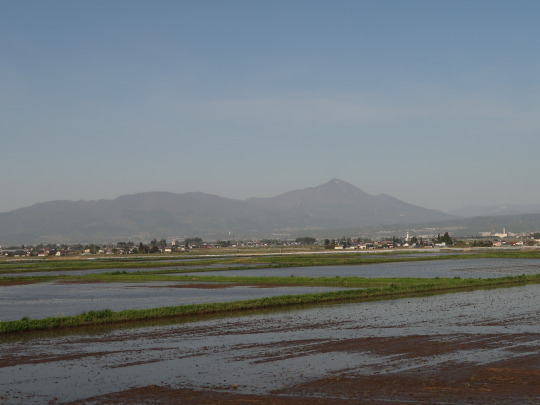
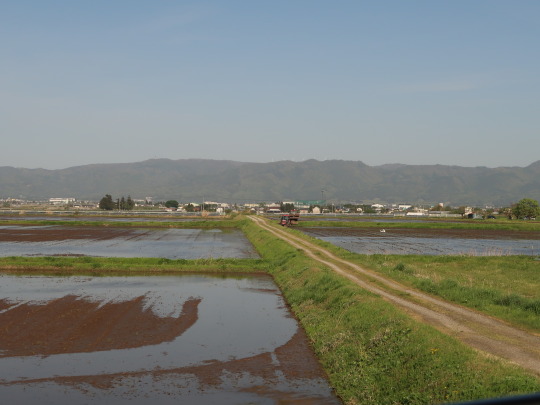
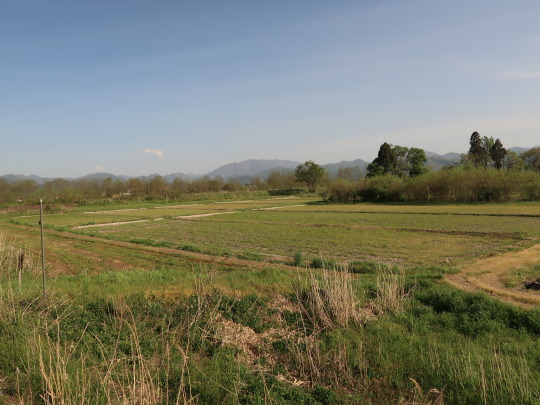




風っこ只見線満喫号 KAZEKKO-TADAMI-MANKITSUGO
只見駅~会津若松駅 Tadami Station~Aizu-Wakamatsu Stasion
福島県南会津郡只見町~会津若松市 Tadami-machi, Minamiaizu-gun~Aizu-Wakamatsu-shi, Fukushima, Japan
2024/04
64 notes
·
View notes
Text
福島県
Japanese Prefectures: Tohoku - Fukushima
都道府県 (とどうふけん) - Prefectures of Japan
Learning the kanji and a little bit about each of Japan’s 47 prefectures!
Kanji・漢字
福 フク blessing, fortune
島 しま、トウ island
県 ケン prefecture
東北 とうほく north-east, Tohoku (northernmost six prefectures of Honshu)
Prefectural Capital (県庁所在地) : Fukushima (福島市)
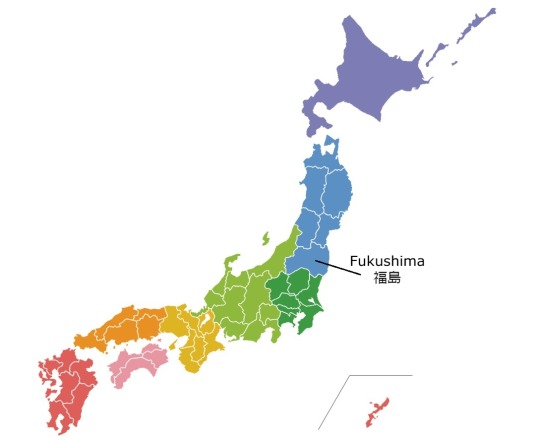
Fukushima is the third largest prefecture of the 47 prefectures of Japan and stretches between the mountainous interior of Northern Honshu to the Pacific Ocean. Like most of the other Tohoku prefectures, Fukushima boasts expansive natural beauty, relaxing hot springs, a rich history, and excellent ski resorts. The feudal Aizu Clan, of the still-standing castle town of Aizu-Wakamatsu, remained loyal to the shogun, even after the shogun was removed from power during the Meiji Restoration. This loyalty led to the Aizu area becoming a battleground of the Boshin War in 1868, where those loyal to the shogun were pushed northwards into Tohoku and Hokkaido as they resisted the reformers and those loyal to the emperor. The Aizu area boasts the post town of Ouchijuku, with buildings retained from the samurai era; Tsuruga Castle; hot springs; and a famous sake brewery.
The March 2011 earthquake and tsunami devastated the coastal areas of Fukushima Prefecture and caused a nuclear accident at the Fukushima Daiichi Nuclear Plant. Tens of thousands of residents were evacuated and a no-entry zone was set up around the nuclear plant. The no-entry zone makes up less than 3% of the prefecture's area, and even inside most of the no-entry zone, radiation levels have declined far below the levels that airplane passengers are exposed to at cruising altitude. Thus Fukushima has been deemed safe for tourists to visit. Wide areas of western Fukushima, in particular, escaped much contamination, including the mountainous interior around the historic city of Aizu-Wakamatsu. And even in most of the eastern parts of the prefecture, radiation levels have by now decreased to pre-2011 levels due to natural decay and decontamination efforts.
Recommended Tourist Spot・おすすめ観光スポット
Ouchijuku - 大内宿
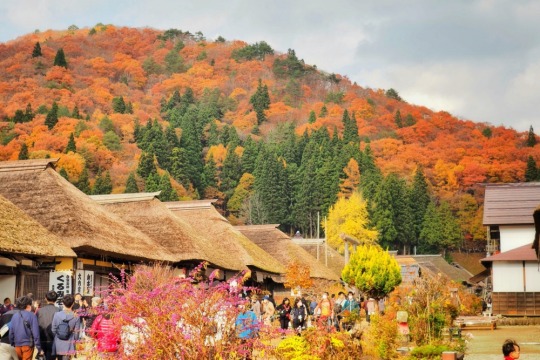
Photo by JR Times
If you want a taste of Edo Period Japan, Ouchijuku is the place for you. This is a former post town along the Aizu-Nishi Kaido trade route, which connected the centers of Aizu (a former castle town to the north in Fukushima) and Nikko (to the south in Tochigi prefecture) during the Edo Period. Restrictions set by the shogunate required travelers to make the journey on foot, and thus post towns such as Ouchijuku developed along the route to provide food, accommodation, and rest. Ouchijuku has been restored to look as it did in the Edo Period, with thatched roof buildings that house a variety of shops, restaurants, and minshuku (small traditional Japanese inns).
The former Honjin, or principal inn for high ranking government officials, is currently a museum, offering an example of elegant traditional housing interiors of the Edo Period and includes a collection of dishes, clothing, and other artifacts.
The Takakura Shrine is a five minute walk off the main path and hosts a unique purification fountain in the midst of a stand of Japanese cedar trees, and was dedicated to Prince Mochihito, who died in June 1180. Near the beginning of the Genpei War (1180-1185) during the Battle of Uji, the prince fled to the Phoenix Hall of the Byōdō-in temple, where he was later captured and killed at the torii gate of Kōmyōsan. It was said that he managed to escape, and hid in Ouchijuku.
Shohoji Temple is located at the end of the main street and up a steep flight of stairs. At the top of the path visitors can enjoy a panoramic view of Ouchijuku and its surroundings.
Regional Cuisine - 郷土料理
Kitakata Ramen - 喜多方ラーメン
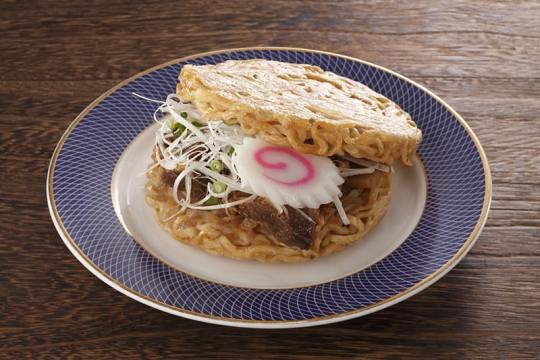
Photo by JR Times
Kitakata ramen is a gourmet specialty from Kitakata, Fukushima prefecture. The origin of these noodles is said to be from Chinese noodles sold in stalls by young people who had come from China from 1920-1930. The noodles are thick and flat with a firm appearance and texture and a relatively high moisture level. The soup is a soy base, with flavors varying depending on the shop, from miso to salt. To determine where to eat, there is a Ramen Map located at the tourist information center in Kitakata.
The popular Kitakata Ramen Burger is made from baked and hardened noodles together with pork, menma, and green onions. Kitakata is also known for its unique culture of eating ramen early in the morning. People who started work very early in the morning at sake breweries and on farms would eat ramen early in the morning, and thus the habit began. "Morning ramen" is available at many shops in the area.
Fukushima Dialect・Fukushima-ben・福島弁
Fukushima-ben or the dialect of Fukushima is similar in some ways to the other Tohoku (or North-East Japan) dialects, but also has some key differences. Here are some interesting phrases I found.
洗濯物をおっこむ (sentakumono o okkomu)
Standard Japanese: 洗濯物を取り込む (sentakumono o torikomu)
English: to take in the laundry
ぶっちめた (bucchimeta)
Standard Japanese: ぶつけた (butsuketa)
English: to hit (e.g. one's head)
すっぺったこっぺった (suppetta koppetta)
Standard Japanese: ごちゃごちゃ言うな (gocha gocha iu na)
English: don't complain about it
うっちしい (ucchishii)
Standard Japanese: うるさい (urusai)
English: noisy, annoying
#japanese prefectures#日本語#japanese#japanese language#japanese langblr#langblr#studyblr#都道府県#福島県#fukushima
86 notes
·
View notes
Text
The Shinsengumi and Religion
The information from the Ishida village census opened my eyes to the fact that in addition to belonging to different schools of swordsmanship, all members of the Shinsengumi belonged to different Buddhist sects, of which there are more than 13 in Japan.
It worked this way: almost from the moment they were born, people were assigned to some temple, and at the very least, they visited it.
But the Japanese are a collective people. For them, belonging to the same clan, the same fencing school, or even having the same character in their names is of great importance :)
And the assortment Buddhist sects also divided people into friends and foes! Especially since the peculiarities of religious movements can leave an imprint on their worldview.
Therefore, I assumed that:
a) Hijikata and Yamanami belonged to different Buddhist sects, and also on this basis they have different views;
b) Yamanami and Okita belonged to the same Buddhist sects;
c) Yamanami's sect is the same as that of the Nishi Honganji monastery. Therefore, he especially cared about the monks and opposed the pressure from the Shinsengumi who wanted to move the headquarters there.
In general, I mostly got it right
In biographies of Shinsengumi members, it's impossible to find information about which Buddhist sect they belonged to, but it could be determined very simply by their places of burial. Again I could only assume this, but in the case of Kondo and Hijikata, it was confirmed to be exactly correct.
Hijikata - Temples: Takahata Fudo (Hino) and Sekiden-ji (Hino), Sect: Shingon
Kondo - Temples: Tenneiji (Aizu) and Ryugenji (Tama), Sect: Soto
Okita - Temples: Senshoji (Tokyo), Sect: Jodo
Yamanami - Temples: Koenji (Mibu, Kyoto), Sect: Jodo
Saito - Temples: Amida-ji (Aizu), Sect: Jodo
Gen-san - Temples: Hosen-ji (Hino), Sect: Rinzai
Todo and Itou - Temples: Koenji (Mibu, Kyoto), reburied in Kaikouji (Kyoto), Sects: Jodo and Shingon
A rather motley crew, but it has a characteristic feature: those who are samurai by birth belonged to the Jodo sect. Although judging by what's written on the Internet, this was not very typical for samurai in general.
As for Hijikata, Takahata Fudo was his family temple, and Sekiden-ji houses his tomb. Both temples belong to the Shingon sect.
With Kondo, it’s interesting: the question of why the very first tombstone to him was erected at Tennei-ji temple in Aizu-Wakamatsu disappears at once. Why on a mountain, which Hijikata was not very comfortable climbing with a wounded leg. Not because this temple is on the way to the hot springs, and not even because the tomb of the Matsudaira family is nearby. It's just that Hijikata-san asked: "Where is the temple of the Soto sect?"
Ryugenji in Tama, the temple of the Kondo Isami family, where his body was buried after the execution, is also of the Soto sect, and this is hardly a coincidence.
Okita and Yamanami belonged to the same religious sect, but Nishi Honganji turned out to be the main temple of a slightly different sect - Jodo Shinshu. But this is also Jodo, only more "true" :)
So for Yamanami, the Nishi Honganji was indeed considered a place of worship, while for Kondo with Hijikata, it was a suitable place for accommodations.
But the Mibu-dera temple generally belongs to the Risshu sect. Serizawa and Hirayama are buried there.

Itou and everyone who was killed in the Aburanokoji Incident are also buried in the same place: Kaikouji. And not even on the actual property of the temple, but behind some kind of fence... They were transferred there from Koenji. I don't know why, I haven't read it yet.
With Nagakura, it's also not entirely clear: one of his graves in Sapporo, Hokkaido, does not seem to be at the temple at all, and the second is near the Jutoku-ji temple in Tokyo. This temple is of the Shingon sect, but there is also a monument to Kondo and all the Shinsengumi, which Nagakura himself erected.
And on top of that, more quality pics of the Shinsengumi sites: portfotolio.net/group/487492@N25
I learned about all sorts of different Buddhist sects only yesterday (before that I had only heard about Zen Buddhism), so I don’t completely understand all this yet, but I understood the main differences.
Shingon is a school of "true words", one of the oldest. Its founder was the monk Kukai, who lived in the Heian period. He is credited with a wide range of achievements in various fields: medicine, poetry, calligraphy, the invention of the syllabic kana alphabet, the compilation of the first dictionary in Japan, etc. The main feature of the Shingon sect is its close connection with Shintoism. In it, Japanese kami are regarded as avatars of various buddhas and bodhisattvas, including Amaterasu, an avatar of the buddha Vairochana. This is esoteric Buddhism - the doctrine of the unity of man, nature and the great all-powerful and all-knowing Buddha Dainichi. The task of man is to reveal in himself the true nature of Dainiti - the Great Sun, and then he can escape from the vicious circle of rebirths and suffering and achieve paradisiacal bliss in nirvana. The details are described here.
Soto is the largest Zen sect in Japan today. Its founder was the monk Dogen, who became acquainted with the teachings of this sect during a trip to China in 1227. Dogen promoted, in his opinion, the only true method of achieving enlightenment - "zazen" (sitting Zen). The zazen practitioner sits with his legs tucked under him and facing the wall so as not to think about anything at all. It's this practice, according to the teachings of the Soto sect, that contributes to a sudden insight that leads to the knowledge of "Buddha's nature." Motto: "Reliance on one's own strength."
Jodo is also called the Pure Land sect. It differs from other Buddhist sects in that liberation from the circle of rebirths in it is achieved not by one's own strength, but through the saving power of another - Buddha Amitabha, which is why it is called the "sect of the forces of another", in contrast to the schools of "own forces". The main form of religious practice of this school is the constant repetition of the mantra "Namu Amida-butsu", which was called "remembrance of the Buddha" (nembutsu) and was considered, with complete faith, the main way of obtaining birth in the Pure Land, the paradise of Buddha Amida.
You can read more about these and other schools here, here or on Wikipedia.
I also found an interesting site, with a large article about the "Religious Views of the Samurai" in seven parts, about seppuku, etc.
29 notes
·
View notes
Text

“Tsuruga-jō Castle” This castle is a symbol of Aizu Wakamatsu city.. Aizu-Wakamatsu is known as the land of the samurai…It was one of the last strongholds of the samurai at the end of the 19th century
66 notes
·
View notes
Text


In and around Aizu-Wakamatsu, Fukushima (2) by AAcerbo
7 notes
·
View notes
Text
List of castles visited 2023
Yeah, I thought about making a list... a few months ago. You know, when it was still 2023 and not halfway through 2024, but oh well.
Private rating follows.
First, the list of castles that I visited last year; not in that order, featuring personal comments.
1) Hachiouji (Tokyo): no castle, climbed a mountain for 40 mins to think the castle is on top. It isn't.
2) Sunpu (Shizuoka): mainly ruins, but nice park
3) Kokura (Kitakyushu): beautiful castle!
4) Kumamoto: top of the castle restored due to the earthquake, now it's accessible by elevator, nice, detailed history explained!
5) Tendou: just... green and... trees. The sun was going down when I went. Oh, there was a stone. Just that. A stone.
6) Matsushima: not a historic castle, they recently built it lol
7) Nihonmatsu: just ruins on a mountain with hiking paths, but amazing view from the top!
8) Aizu-Wakamatsu: lovely castle! view on mountains
9) Utsunomiya: they restored parts of the castle, fairly new, but they got a nice museum with it
10) Ueda: lovely place with a park, not really a castle but towers, one of them is still original from over 400 years ago, but still nice, view on the shinkansen tracks
11) Matsumoto: geez those stairs, don't go in summer, nice view from the top, but... stairs..., very well organised when crowded! so don't panic about that
12) Toyama: interesting museum and view on mountains, city and... birds, they got lots of these birds there, they feed them, it's fun
13) Kanazawa: they still work on adding more buildings, very fascinating to witness a castle being rebuilt! lots of English explanation too, soooooo many tourists though
14) Nagoya: you can't enter rn because it's not earthquake safe, but it's pretty from outside and the exhibition of the honmaru rooms are so pretty! the park is... weird
15) Gujo-Hachiman: such a nice lovely town and so many lovely mountains!!
16) Gifu: the VIEW
17) Inuyama (Nagoya): like Matsumoto, but nicer stairs lol, be careful on the very top
18) Kiyosu (Nagoya): view on the shinkansen tracks lol, pretty when lit up at night
19) Fushimi Momoyama (Kyoto): the haunted castle, very interesting & creepy history, no tourists, like... at all, went with a friend and it was just us
20) Tottori: lovely place when the sun is setting
21) Matsue: like Matsumoto but with nicer stairs, nice feeling when there's wind if you're on top, view on mountains
22) Okayama: looks pretty!
23) Himeji: I felt history, amazing castle ground, BIG
24) Takamatsu: partly under construction, smol, nice park,
25) Shuri (Okinawa): Interesting to see different structures, nice view from the viewpoint!!
26) Nakagusuku (Okinawa): that was a lovely one! the rocks, the wind, the sea
27) Nakijin (Okinawa): it was already nice when it was raining, probably nice with sun out, BLUE SEA
28) Nago (Okinawa): no castle, just... a mountain you reach after lots of climbing. or maybe I'm biased because i cycled over a mountain and back again, so my legs were very, uh, yeah
29) Zakimi (Okinawa): smol but nice view!
30) Urasoe (Okinawa): such interesting history! There are barely explanations, but I met an old man who told me about it.
31) Ananiya (Okinawa): Yeah. This is a castle. Or a gusuku, as they're called in Okinawa. I only found out after I returned from my trip. Nice place, just a mountain now, but very Okinawan. Hard to explain.
Geez, 31! Whereof I visited all Okinawa castles within a week lol.
So.
What's my favourite now? Tough question, I personally liked these best, not necessarily in that order:
Kokura, Nihonmatsu, Himeji, Nakagusuku, Gujo Hachiman, Aizu-Wakamatsu
1 note
·
View note
Text
Nach dem Tag im Freizeitpark ging es dann weiter mit dem Reisen! Wie bisher auch war schlafen im Kapselhotel wenig erholsam, aber ich musste für meinen Bus auch schon um kurz vor 6 wieder hoch, also war das schon in Ordnung. Tatsächlich beinhaltete die Buchung sogar Frühstück (naja, also für jedenzwei Scheiben Toast, zwei Eier und ein Getränk), also konnte ich mir zwei Eiersandwiches mitnehmen und ein bisschen Proviantkosten sparen 😌
Ich bin im Endeffekt auch glaube ich ganz froh, mich für den Bus entschieden zu haben, auch wenn der knapp 2 Stunden länger braucht. Sich keine Gedanken um Umsteigen oder Anschlusszüge machen zu müssen (und das mit Gepäck) empfand ich als recht angenehm 😊
In Aizu-Wakamatsu stoppte ich also kurz zwischendurch, weil ich die Präfektur Fukushima noch gar nicht besucht hatte. Jedliche eventuelle Sorgen meiner Familie kann ich aber beruhigen, innerhalb der Präfektur kann man sich kaum weiter weg vom Kernkraftwerk befinden als ich.
Aufgrund meiner begrenzten Zeit - es fahren leider nur zwei oder drei Busse und Züge am Tag nach Niigata - konnte ich auch nicht viel mehr anschauen als den Sazae Tempel und die dortige Umgebung des Berges Iimori.
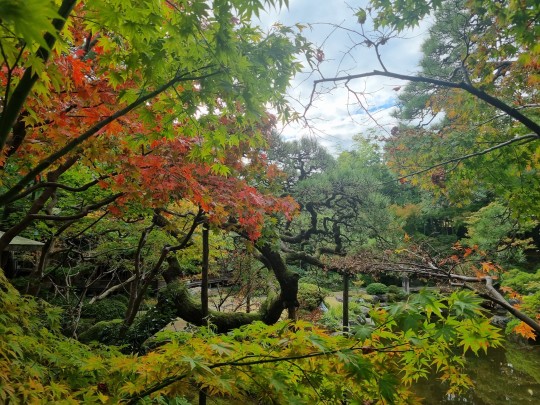
Dort angekommen ist mir mal wieder aufgefallen, dass Herbst wirklich meine Lieblingsjahreszeit ist. Langsam werden die Blätter hier bunt uns es sieht einfach echt toll aus, da hatte ich trotz des Nieselregens gleich gute Laune. Und die Berge! Heute war auch super klare Luft, daher konnte man wieder echt weit sehen und Berge im Herbst sind schon eine echt schöne Sache 😊


Der Sazae Tempel entstand 1796 und ist scheinbar das einzige Gebäude, was aus der Mitte der Edo-Zeit noch so erhalten geblieben ist. Er ist so gestaltet, dass man wendeltreppenartig hoch und dann hinuntergeht, aber beides nur in eine Richtung. Von vorne wird einem also niemand entgegenkommen. In der Nähe befinden sich auch die Gräber vieler damaliger Feldherren und mehrere kleine Altare zum Beten. Sonst bin ich nur noch ein bisschen in den Bergen rumgelaufen. Hatte ich erzählt, dass ich Berge im Herbst echt hübsch finde? 👀

Ansonsten bin ich nur noch - wieder entspannt mit dem Bus - nach Niigata weiter gereist.
Dort habe ich mir auch überwiegend die Stadt angesehen. Nachdem ich bei drei Tempeln vorbeigeschaut hatte, ging es für mich zur Saitou Villa, dem Anwesen eines reichen Händlers aus 1918. Aktuell sind Haus und Garten zur Besichtigung freigegeben und ich weiß gar nicht, ob ich das schon erwähnt hatte, aber so ein Garten sieht im Herbst schon nett aus 😂

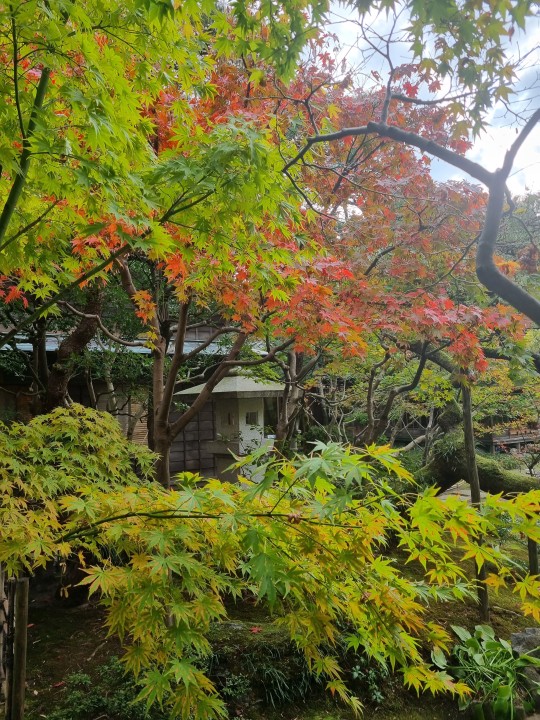
Dort hielt ich mich dann eine Weile auf. Und weil mir das noch nicht genug Grünzeug war, bin ich danach zum Hakusan Park aufgebrochen, wo ich ebenfalls ein Weilchen herumschlenderte.

Joa, für alles weiter abseits war auch eigentlich gar keine Zeit mehr, also hab ich mich für so ne Stunde in ein Internetcafé gesetzt, bei dem sich jeder frei an Getränken und Softeis bedienen durfte. Entsprechend hab ich in der Zeit - während ich ein paar Anime Folgen schaute - so drei heiße Schokoladen mit Vanilleeis, eine Maissuppe (ist hier quasi ein Getränk) und zwei Gläser Ginger Ale konsumiert. Den Aufenthaltspreis von umgerechnet 3€ hatte ich also locker wieder drin. Zum Glück gab's da dann auch eine Toilette 😂
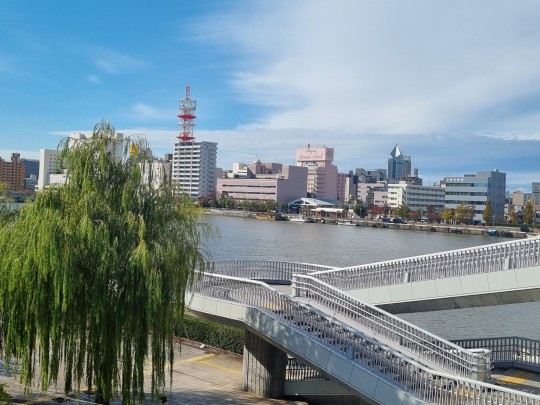
Und das war's für Niigata dann auch schon. Mit dem nächsten Nachtbus führte mich mein Trip dann also zu meiner letzten Station Toyama.
Hier habe ich mir den Kojo Park und den Imizu Schrein in Takaoka angeschaut. Ich kam gerade zur Öffnungszeit an, also war echt nichts los und kaum jemand da außer des Tempelpersonals, die alle noch gefegt haben. Aber nachdem ich mich überwunden hatte, jemanden anzusprechen, ob ich schon Glücksbringer kaufen könne, hatten wir ein nettes Gespräch und ich bekam ein sehr cooles Goshuin 🥰
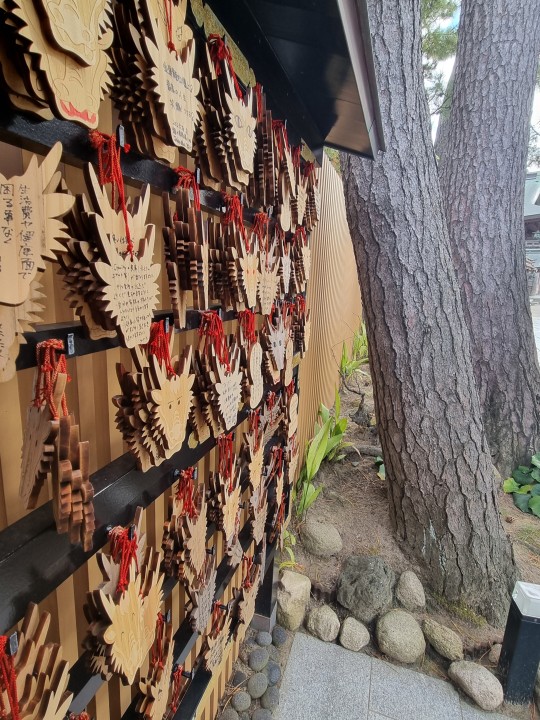
Danach bin ich zum Zuiryuu Tempel weitergegangen, aber leider stellte sich heraus, dass ich nicht mehr genug Bargeld für den Eintritt hatte, also hab ich ihn dann doch ausgelassen und bin nach Toyama zurück, um mir die Innenstadt näher anzusehen. Die sieht übrigens aus wie in jeder anderen Großstadt auch.

Leider hab ich am Anfang des Tages bemerkt, dass ich meine PASMO Karte verloren habe. Ich hab alle Hotels und Orte, an denen ich mich länger aufgehalten habe, angerufen, aber scheinbar ist sie mir unterwegs irgendwo aus der Handyhülle rausgefallen. Das ist insofern echt ätzend, dass meine Arbeitsstunden auf der Karte registriert werden und ich nicht weiß, wie einfach es ist, da eine andere zu nutzen. Außerdem hatte ich sie gerade aufgeladen, was natürlich ärgerlich ist, aber sich ja nun auch nicht ändern lässt. Also muss ich wohl oder übel mal meinen Chef anschreiben und fragen, ob es möglich ist, die Karten zu wechseln 🙈
0 notes
Text



Summer is over. Keep some souvenirs.
0 notes
Text

Rinkaku Japanese Tea Room, Aizu-Wakamatsu
8 notes
·
View notes
Text

Enzoji Temple (圓蔵寺, Enzōji) is a Buddhist temple in the small town of Yanaizu, about a one hour train ride from Aizu Wakamatsu. The temple has a history stretching back 1200 years and is considered one of the three main temples in Japan dedicated to the Kokuzo Bosatsu, a bodhisattva whose wisdom is said to be as great as the universe.
0 notes
Text
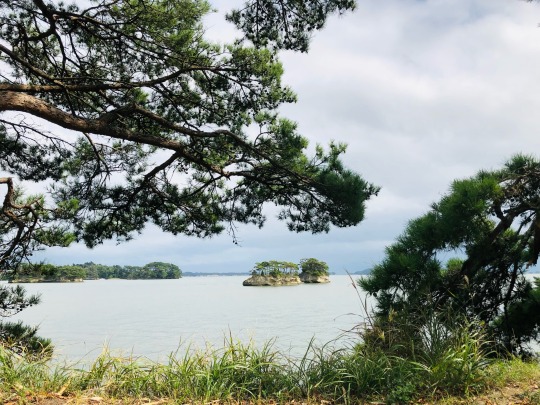


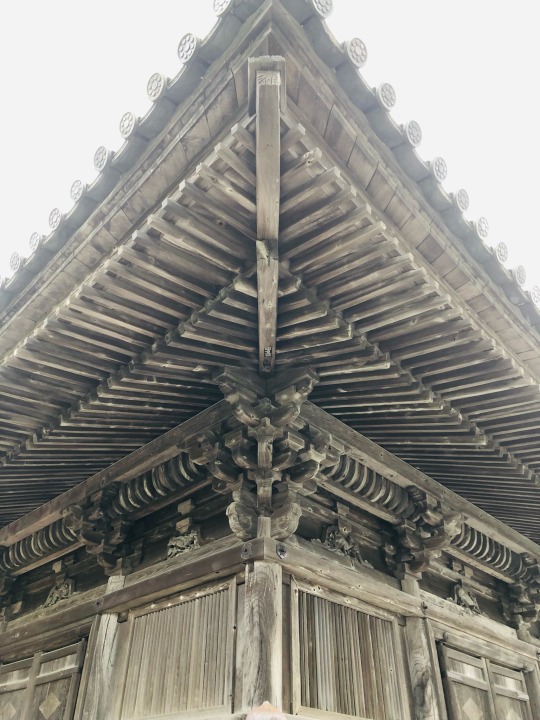
silver week: miyagi
september 22, 2022
>> see more matsushima photos <<
>> see all silver week 2022 posts <<
today was the day i was originally supposed to be in aizu-wakamatsu in fukushima prefecture. plans change, yadda yadda, and instead i ended up in matsushima in miyagi!
i’m actually not all that disappointed by the change, because matsushima was actually really nice, like a breath of fresh air. it is one of japan’s three exceptional scenic views (along with miyajima and amanohashidate). matsushima is a little town with a bay dotted with islets covered in pine trees. it was really cloudy and rainy the day i was able to go, but you can still see how matsushima bay got its reputation. also because of these islets, matsushima town was spared major damage from the 3/11 tsunami.
you can go onto some of these islets. i went onto oshima, which is a small islet to the south of matsushima bay. you can also go onto fukuura, which is a bit bigger and north of the bay. oshima was really cool to explore, but also kind of creepy because there are lots of caves and sometimes it felt like i had gone back in time and was the only one there lol.
the bay itself can be seen from a green park, and just north of the park is an extension of a famous temple -- it’s a little pagoda called godaido, and it’s on its own islet. you have to cross a couple of bridges to reach it. it’s really cool, the woodworking on the pagoda is pretty ornate.
the temple it’s connected to is called zuiganji and it’s a very important temple in tohoku. you can go into the main hall, but there weren’t any photos allowed. inside there are lots of gold screen paintings depicting birds and nature scenes and the islets themselves. it’s very pretty and extravagant. there’s also a museum of some treasures, but personally the main hall is the place to spend your time.
in the bathroom, the stalls are made of cedar trees. there’s a notice that tells visitors that the cedar trees which line the path into the temple were damaged in the tsunami and the ones that weren’t salvageable were used to make the bathrooms. i thought that was pretty cool, and it’s clear they’re trying to restore the cedar trees.
overall, matsushima was probably my favorite place i visited during the trip, though yamadera is a close second.
1 note
·
View note
Text
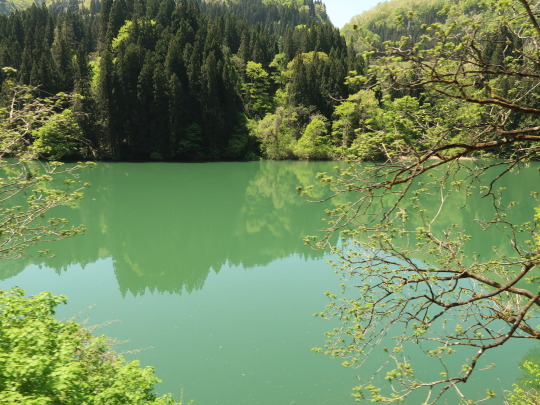
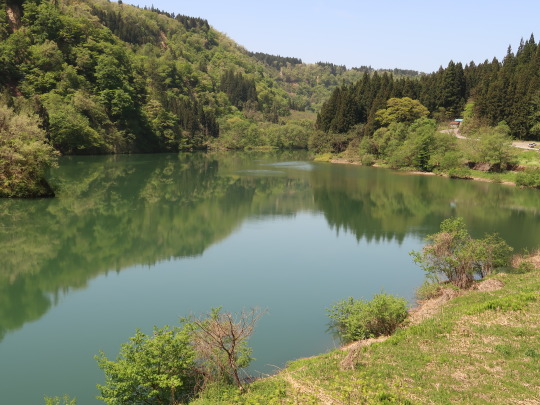




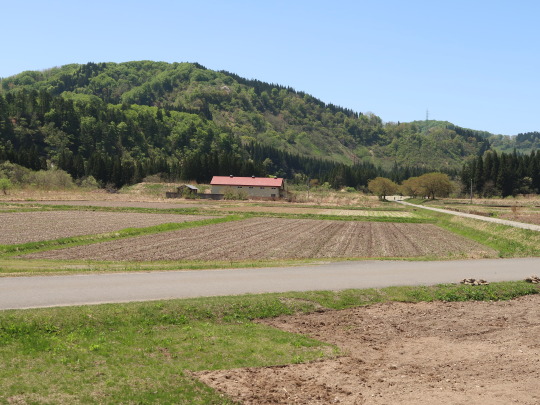
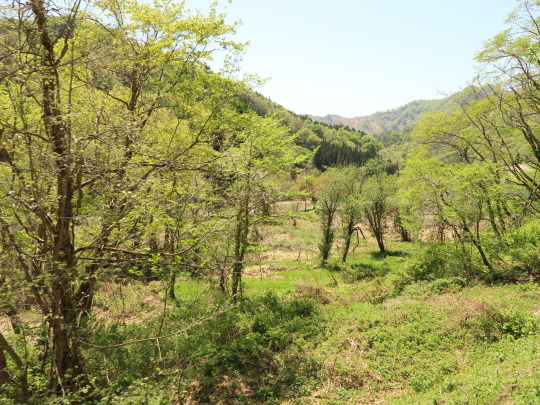

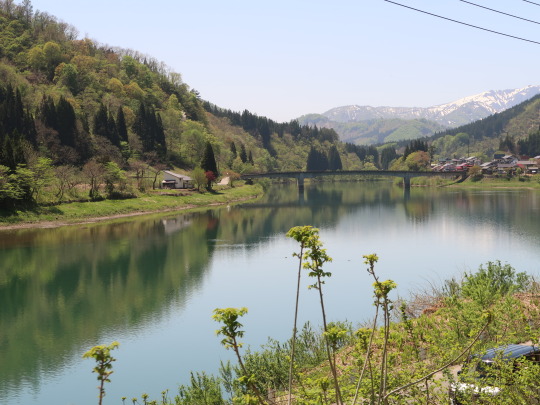
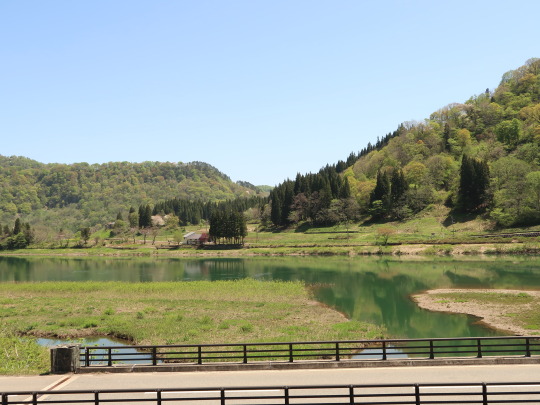

風っこ只見線満喫号 KAZEKKO-TADAMI-MANKITSUGO
会津若松駅~只見駅 Aizu-Wakamatsu Stasion~Tadami Station
福島県会津若松市~南会津郡只見町 Aizu-Wakamatsu-shi~Tadami-machi, Minamiaizu-gun, Fukushima, Japan
2024/04
59 notes
·
View notes
Photo



13/12/2005: The Samurai Residences / Aizu Bukeyashiki in Aizu-Wakamatsu (aka that time my aunt and I near froze in Tohoku)
0 notes
